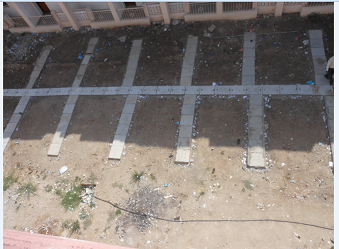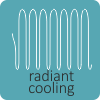A Ground Source Heat Pump (GSHP) system heats and cools building by using earth as a heat source or heat sink. The system either extracts thermal energy out of the ground or transfers thermal energy from buildings to the ground. Moreover, heat energy stored during the summer season could be extracted out during winters to heat the ambient spaces. On average, 46% of the total solar energy received is stored. At 4-6 meters below ground surface, temperatures are more or less constant. Heat could be pumped in during summers to the ground, where the temperature is lower than the ambient temperature. GSHP system has three major components:
- Earth Connection:
Earth connection is the connection between the GSHP system and the soil. Most popular connections are tubes, introduced either horizontally or vertically into the ground, or submerged in a lake or pond. The tubes carry an anti-freeze mixture and a suitable type of heat transfer fluid. - Heat pump:
Heat pump helps heat transfer from fluid in the earth connection to the distribution system. The heat pump consists of a heat carrier like water or air, which absorbs heat from heat transfer fluid through indirect contact and subsequently carries this heat energy to the heating/ cooling distribution system. In a reverse cycle, the heat carrier transfers heat from the distribution systems to the heat transfer fluid in the earth connection. - Heating/ cooling distribution system:
This system delivers the heating or cooling from the heat pump to the ambient spaces. It consists of air ducts, diffusers, fresh air supply systems and control components, and circulates the supply air as per design conditions and occupants requirements.
Depth below ground surface where temperatures are nearly constant is valid for India. It varies by latitude.
Table: Advantages and disadvantages of Ground Source Heat Pump
| Pros | Cons |
| The system has high EE (50 – 70%) and provides heating, cooling and hot water | More suitable for composite climate as continuous pumping of heat to ground could make the ground saturated |
| Low maintenance requirement as well as operates at a lower cost | It requires an intense concept design stage research to check the feasibility of the system on the individual site |
| Uses renewable source of energy | Requires skilled labour for designing and installing the system |
| Government approval may not be available for all states | |
| High initial investment |





















